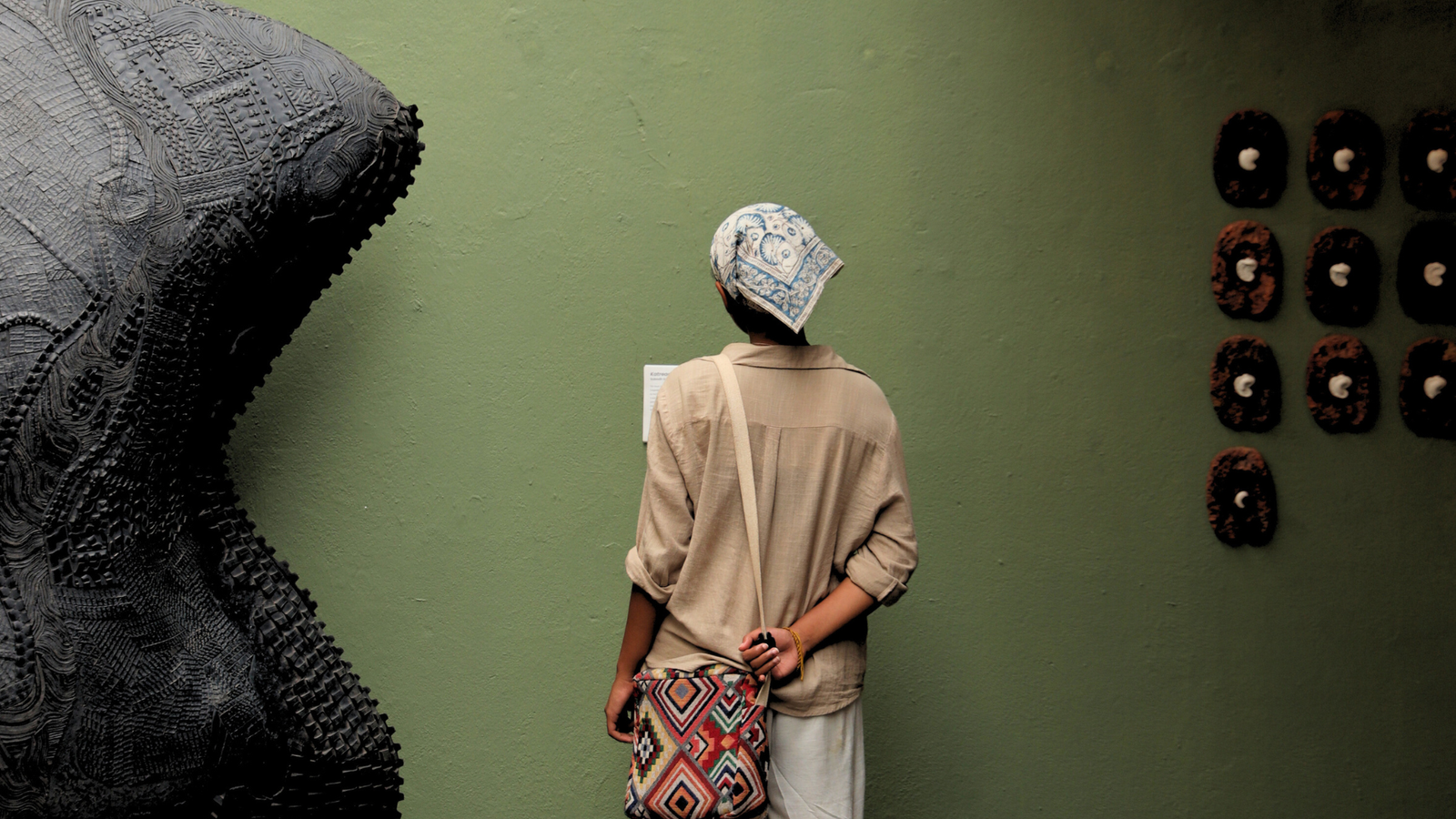Introduction
My first visit to the Museum of Goa was on a school trip, where all the artwork was explained in detail to us. The second time I visited, I had the opportunity to see each of the artwork through my own lens, and interpret them in a different way. Though I thoroughly enjoyed both, I greatly prefer my second visit. It allowed me to understand the art and where the artist was coming from, along with my own viewpoint, and after I read the description I could compare and contrast it to what I thought of it.
The museum itself is unlike any other I’ve been to, because instead of using statues or other historical pieces, they have used modern art to showcase history as a story. Each artwork is vastly different from the other and they all have a unique meaning to them.
I noticed that most of the artwork was focused on highlighting Goa as a state and sharing its culture. It’s definitely a place rich with pride for Goa’s heritage.
The Fishing Couple by Subodh Kerkar
When I first saw this artwork, I was immediately captivated by its eerie, yet entrancing nature.
This piece is painted in shades of brown to symbolise warmth, stability, but also its unfamiliarity and intricate attention to detail. To many, this could be an abstract painting of faces twisted together, but to me, it has a deeper meaning. I think this piece represents how different people perceive the different sides of a person.
To some who know you well, you could be bubbling with personality but to those you don’t, you could be just another character in their story. I find it fascinating that so many versions of you exist in people’s heads and this artwork has managed to portray exactly that.
The tile-like squares give a distorted look to image, showing how nobody knows who you really are except for yourself.
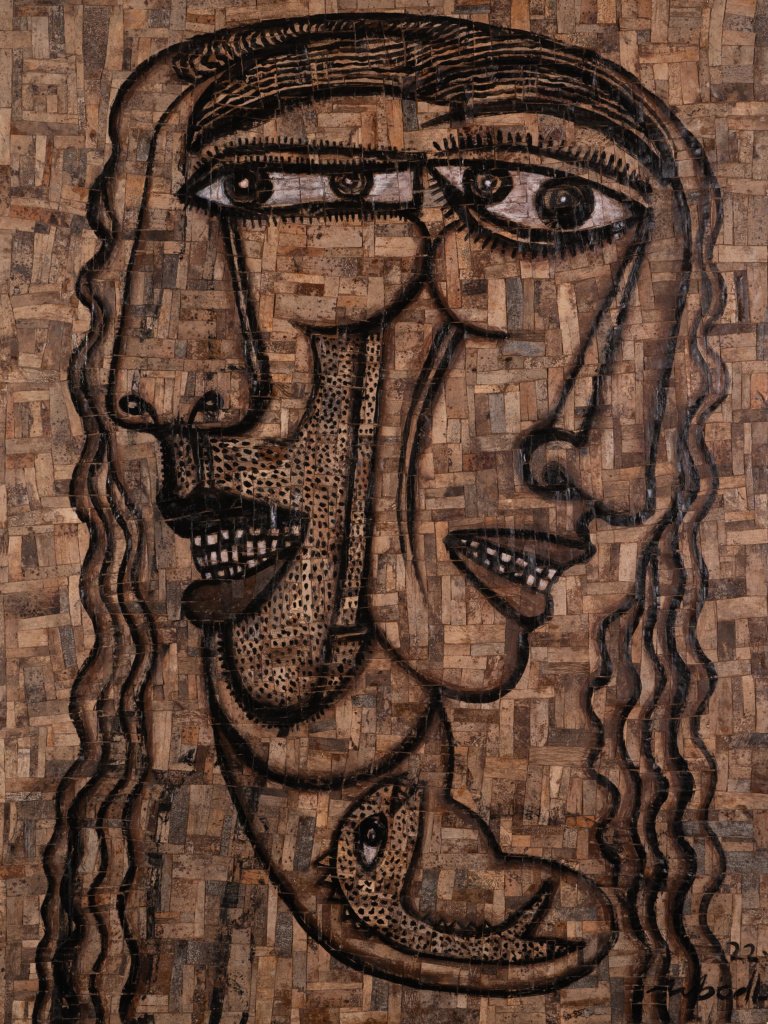
Chillies by Subodh Kerkar
This piece is unique, eccentric, and amusing in all the best ways. It captures its audience through its quirky patterns and its vibrant colours. I think this piece depicts how each person comprises of many physical and mental layers.
It portrays how there is more to a person than skin and bone. A person is made up of their thoughts, beliefs, experiences, and most of all the way they act, or their personality. It tells us how there is so much more to a person than you can see.
The shimmering effect illustrates the positive emotions a person can have and the darker colours like red, brown, and black can be the negative emotions a person can have.
Another thing I think it shows is how, none of the chillies are alike, displaying how everyone is their own person and everyone is one of a kind. I think this piece has beautifully exhibited what defines a person and how every single person is rare.
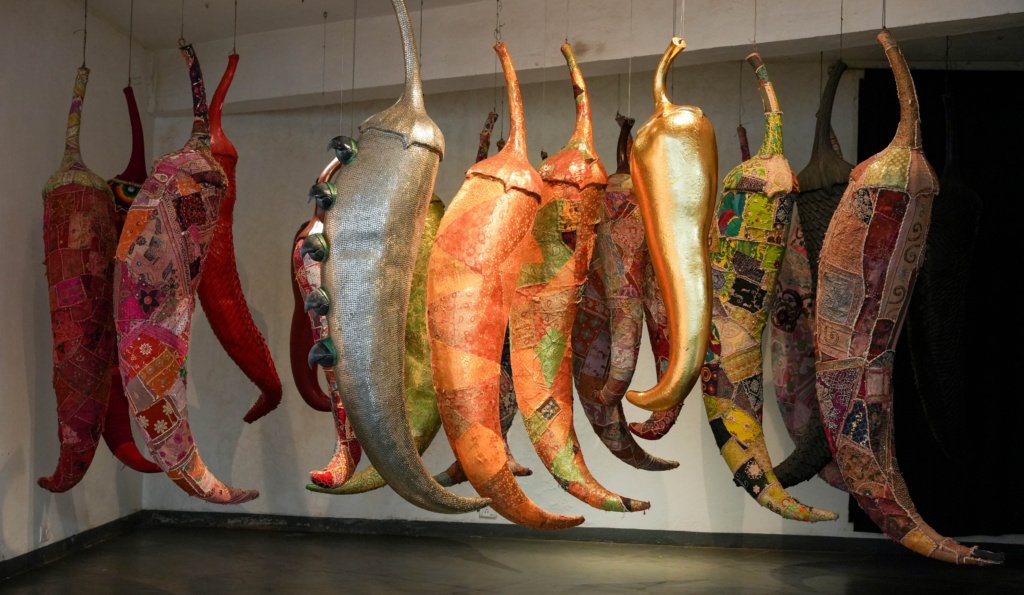
Untitled by Rahul Shakya
To me, this piece looks like it is supposed to represent the sacrifices we make for our loved ones. It simply looks like a man giving his food to an animal but I think there is more behind it. I think that the distortion at the top of the man’s head shows how much he needs the food and that he will fade away without it, yet, he chooses to feed the animal in front of him. It represents how we have to sacrifice some pleasures in life for the better of others. It tells us to believe in the hope for humanity.
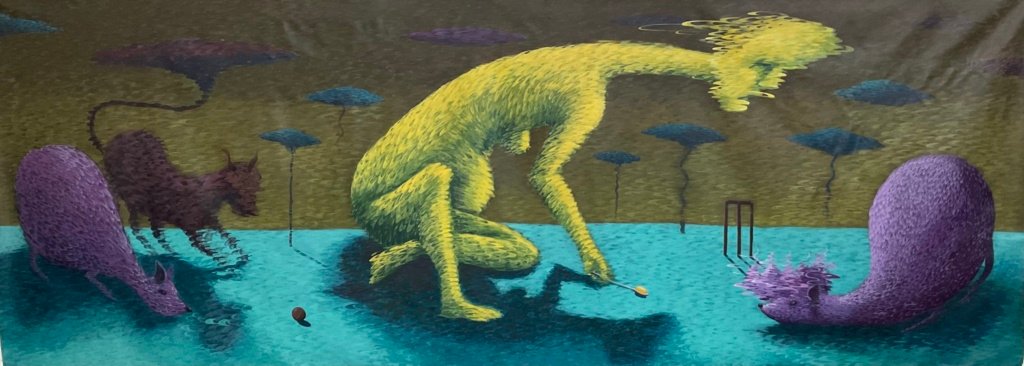
Van Gogh Toy Face – Toy Block Edition by Amrit Pal
I think this artwork is about childhood nostalgia and reminiscing the past. The lego-like build adds to the element of youth and amusement, and the bright colours symbolise sentimentality, for example; the yellow is used to show happiness, joy, and the purple is used to show light hearted energy. This piece has managed to break down your childhood into different components, the figure for physical, the texture for entering adulthood, and the lighter colours to represent purity and innocence.
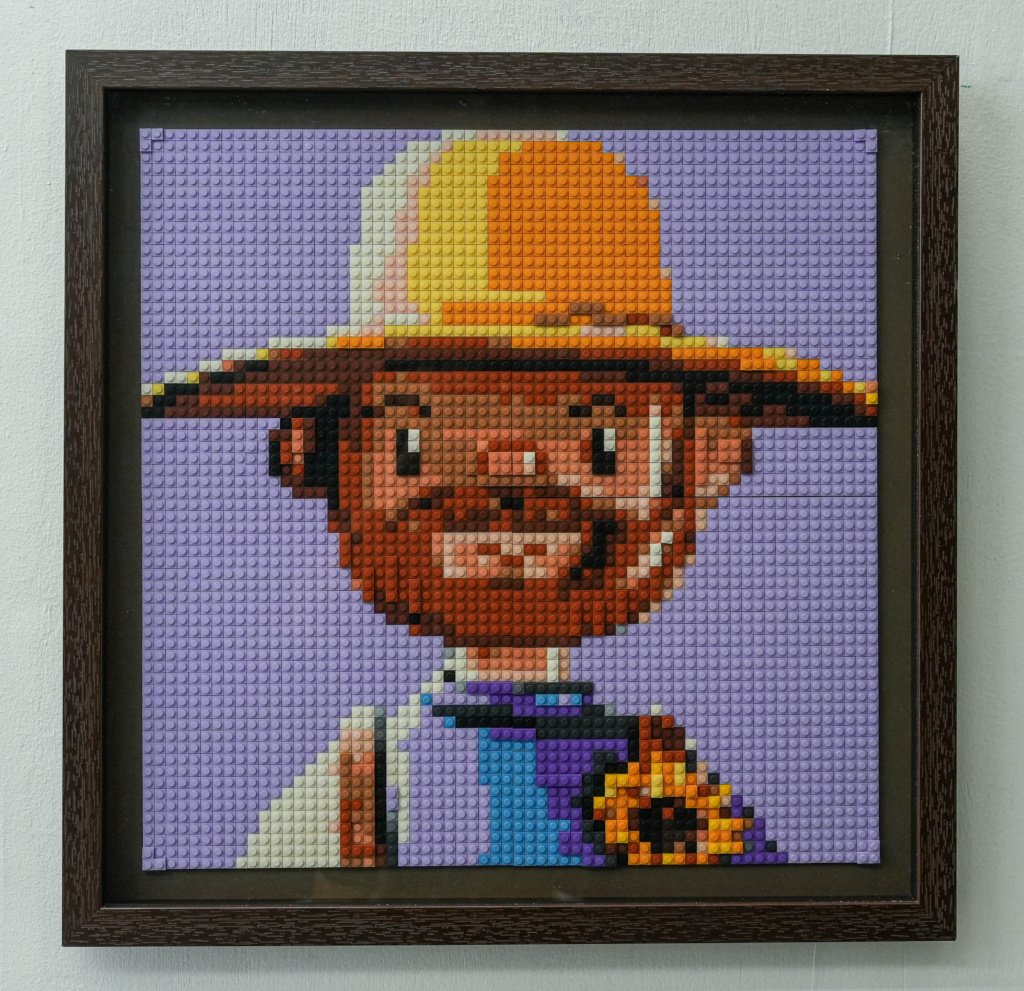
Conclusion
I strongly believe that the beauty of art lies in its openness and freedom. It’s not a rigid or fixed design, but a conversation between the artist and the observer. It allows individuals to connect to art and engage with it on a personal level, beyond what the piece is supposed to be. Art’s beauty is not confined to its form or technique but remains in its capacity to evoke countless emotions and thoughts, leaving an impact on the soul.
Written by: Reanna Khetrapal
About Reanna:
Reanna Khetrapal is a 12-year-old student from Goa, currently studying in the 8th grade. Her love for writing comes from being an avid reader and a keen listener, always curious about how others see the world. She especially enjoyed writing her interpretations of the artworks at the museum, as it revealed how uniquely each person thinks. Outside of reading and writing, Reanna enjoys exploring different art forms like painting, pottery, and resin — she simply loves to create.

